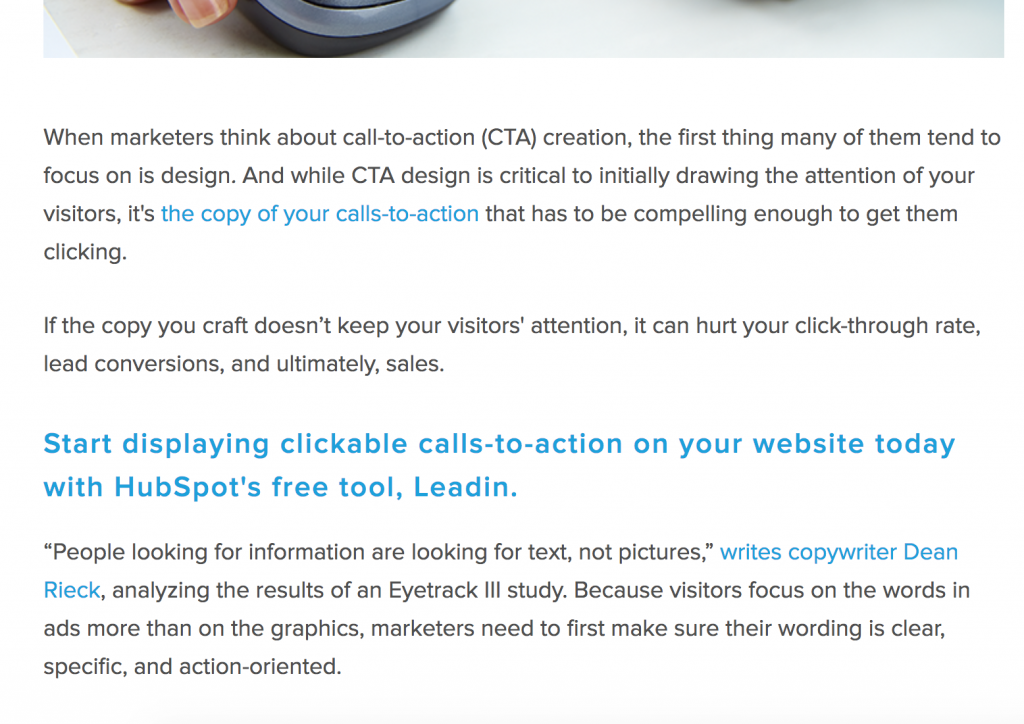Content, social media, and search engine optimization are what commonly make up an inbound marketing strategy. In a previous post, we discussed different ways you can transition your marketing from outbound to inbound using these three tactics. Now, we’re here to divulge some secret strategies to make your inbound marketing even better.
Unfortunately, writing blog posts or sharing content on your social media every week isn’t going to give you the top results you want. The real secret to inbound marketing success is in the details. In other words, it’s not enough to just type out a blog post — you need to consider relevant topics, keywords, post length, imagery, calls-to-actions, and more, as well.
Each of these additional aspects can increase your engagement, lead generation, and search engine rankings. While adding more work into your already busy schedule may seem daunting, we promise these little tweaks can reap big rewards.
Without further ado, let’s dive into what exactly these “secret” strategies of inbound marketing are, and why they’re worth the effort.
1. Add in-text CTA to your blog posts
Even if you receive decent traffic to a blog post, without a next step for users to take all those potential leads are essentially wasted. Calls-to-actions, or CTAs, are the secret ingredient that make your content worthwhile. They give your users the option to click for more relevant content or offers from you, and create the conversion results that inbound marketing promises.
Commonly, CTAs are placed at the bottom of blog posts. Users open a post, read through it, then click for more content at the end. However, there are additional ways to utilize CTAs to increase your chance at lead generation and conversion.
Small or full-screen pop-up CTAs are largely used on blogs, as are slider ads. However, another effective, albeit less used option is to write in-text CTAs directly in and throughout your content. As with all CTAs, these are great for sharing posts or offers that are related to the topic you’re writing about.
They differ from an average CTA because they don’t use any imagery or buttons that may distract from the main content of the post. Instead, to differentiate from the body copy they often appear in a slightly larger and different color than the other content in the post.
Below is an example of an in-text CTA in a HubSpot article. The article is a list of CTA examples, so their in-text call-to-action (the larger, blue font) is a relevant tool they have available that can help you display your CTAs for free.
2. Be sure to have social share buttons on your blog
As social media becomes increasingly prominent in users everyday lives, having social share buttons on your blog is an obvious necessity. Most blogs have their buttons at the top, bottom, or side of their blog posts. This gives users the option to share what they’re reading about, and gets your content out to additional people.
Depending on your business’ goals, you can use social share buttons, social follow buttons, or both. The social share buttons will prompt users to share the direct blog post, whereas the social follow buttons will encourage users to follow your business on social media.
Bonus Pro Tip: Have your social follow buttons in your header or footer, and then your social share buttons directly on your blog post to get the best out of both worlds.
The social sharing business, Buffer, has a couple share buttons right under the title of their posts, in addition to a column of social share buttons that’s stuck to the left side of the blog as users scroll down to read.
Most websites will have plugins for this ability, but you can also connect tools like BuzzSumo to get the desired social buttons on your blog.
3. Listen to your audience
What’s the best way to figure out what your audience is interested in? Listen to them. This may be self-explanatory, but we want to iterate this point because it’s one of the most straightforward ways you can ensure your content is relevant and relatable to your target audience — which will undoubtedly increase your chances at inbound marketing success.
From surveys to social media to measurable metrics, it’s not too difficult to have conversations with your audience and follow them to discover what type of content will attract and delight them the best. Understanding your audience can give you an advantage over your competitors that may not be utilizing the same inbound tactics to their full potential.
A post on the SalesForce blog explains the importance of listening to your audience well: “listening empowers businesses to identify their [buyer] personas, ultimately allowing them to understand their customers on many levels. Always aim to build content that your audience is truly interested in.”
4. Be strategic and recycle
You can begin implementing inbound tactics even if you don’t have a full marketing team to help. Use what you have, and be strategic about getting the most out of one piece of content as you can. For example, even if you have one downloadable piece of content (like an ebook or checklist), share it, email it, and then continuously go back and reshare it, tweaking the content and marketing for it each time.
Even if you do have a solid, continuous flow of new content, it’s still really important to remember to recycle your older content when it’s relevant. Why? First, trending topics often find a way of coming back into style again in the future (this happens in every industry, for example jean jackets and choker necklace of the 90s have found their way back into fashion). Meaning, the post you wrote last year (or even a few years ago) may still be relevant to share today. Put it in your queue and spark some reengagement without even having to write a whole new post! Additionally, re-sharing past posts (like the example above) can help you make use of social media trending hashtags such as #throwbackthursday (#tbt) or #flashbackfriday (#fbf).
Secondly, recycling old content keeps you on your toes. With a backlog of blog posts comes the responsibility of keeping them updated. You don’t have to reshare every single post you’ve written — you’d never have time to write anything new! However, you can see which posts did the best in past and are still receiving decent traffic today and be sure you’re continuously updating and re-sharing those particular posts. Not only does this show that you’re a reliable and credible source for your audience, it’s a perfect tactic to use when you might be a little too busy to write brand new posts for a week or a month at a time.
5. Know what social platform converts the most
It seems like every day there’s either a new social platform coming out or new updates being released. Between the top platforms (like LinkedIn, Facebook, Twitter, Instagram, Pinterest, YouTube, and Snapchat) it’s already a lot to handle, especially if you’re a one-person team.
So which platform(s) should you focus your time and investment on? The simple answer is to be where your audience is.Creating buyer personas and understanding your audience is crucial to knowing what content and where to publish it. In fact, Forbes wrote an article earlier this year that can help businesses determine which social platforms are right for your business based on each platform’s top demographics.
Along with demographics, It’s equally important to remember that different platforms cater better to different forms of content as well. So if you plan on creating tons of live video content, then you should be using platforms like Facebook, Instagram, and Snapchat that currently in the live video market. Or if you focus on B2B written content, then LinkedIn is probably what you want to put more of your energy into at first.
Whichever platforms you end up using, just be sure that it’s where your audience is. And if your business evolves, then widen your social media arsenal with it.
6. Set the right metrics
Implementing all of the aforementioned tactics won’t get you anywhere unless you’re measuring and analyzing the right data. Knowing what strategies are working and which aren’t is crucial to success. Marketing and user behavior is constantly changing over time, and keeping tabs on your metrics will allow you to improve and change along with them.
What metrics should you be measuring? That really depends on your specific business goals. However, there are metrics that every business should be paying attention to no matter what, such as:
- Monitor where your web traffic is coming from
- How many website visitors convert to leads
- How many leads are converting to customers
- What content generates highest traffic and conversion rates
- Track your eCommerce sales
- Track your social media growth and engagement
- Keep an eye on returning visitors and how many convert
- Be aware of your bounce rate
- Track your ROI on your marketing efforts whenever possible
Measuring and understanding these metrics are essential in figuring out what design, content, and campaigns are giving you the best results.
If you’re new to collecting data, there are a plethora of tools available to help you get the information you need. The most common (and important) tool is Google Analytics. Moz has an extremely helpful article on why you should use and how to for beginners here. And if Google Analytics doesn’t have all you need, there are tons of online tools available to help you set the right metrics, like HubSpot or HotJar.
7. Have frequent content audits
If you’ve set up metrics and have looked back on your analytics to see what posts are worth recycling and what social platforms yield the best results, then you’re already halfway to performing frequent content audits.
Content audits are when you go through your content history to see what works and what doesn’t, so you can constantly improve your inbound marketing strategy. You can perform them annually, bi-annually, monthly, or whatever works best for you. The more content you have, the more likely you might want to perform audits.
We know analyzing your data isn’t necessarily the most fun aspect of inbound marketing, but it is a crucial detail to implementing a successful strategy. An easy way to remember to perform them frequently is to send yourself automated email reports to receive information about your content such as pageviews, clicks, click-through rates, etc. This data can help you determine what posts were most successful and what keywords and calls-to-actions worked best — then you can use this insight to improve your future content.
Better yet, Buffer has shared their step-by-step guide on completing a content audit that lists what data you want to measure, how to gather that data, and what to do after you get your audit results that you can get for free here.
8. Integrate your online and offline marketing
Despite many arguments against it, print isn’t dead. Even if you’re solely an eCommerce business, that doesn’t mean you can implement creative offline marketing to increase brand awareness or traffic to your website. And if you’re still primarily brick-and-mortar, you should be establishing and continuously growing your digital presence, too.
Simple ways to combine your marketing offline and online would be to allow people to order online but pick up in-store (often for free), or have a newsletter sign-up at your checkout counter, or even advertise for an online-only sale to direct your brick-and-mortar customers to your online shop.
Many businesses may believe that since their market is online, that’s where they should be advertising. Although this is definitely true, it doesn’t mean it’s the only option you should use. Online and offline marketing have their obvious differences, but they make a surprisingly perfect team.
In fact, according to Business 2 Community, “experts now regard the former practice of creating two different strategies for the online and offline world as the old way. The new way to plan your online and offline campaigns is to create a single congruent campaign centered on a central message.”
Recap
Whether you take small steps to start integrating inbound tactics into your marketing or jump into an entire marketing strategy overhaul, you’re only going to get out of it what you’re willing to put into it.
Focusing on all these details may seem overwhelming, but they’ll inevitably be what separates you apart from your competition in the long run.
Do you have any secret strategies of your own that work great for you? Share them below, we’d love to hear them!





